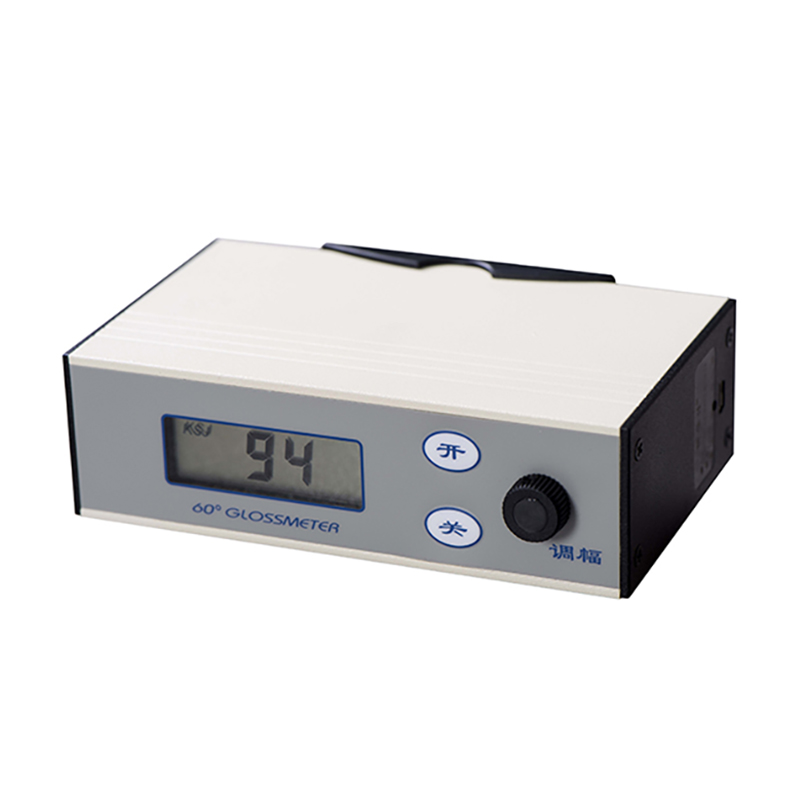头部邮箱+阿里巴巴
E-mail: sales@ksj.cn 

Enter search content

NEWS
News
Hot Products
Enhancing Product Quality with Accurate Luminance Measurements: A Comprehensive Guide for Manufacturers
- Time of issue:2023-09-22
(Summary description)Discover how accurate luminance measurements can significantly enhance product quality in various industries. This comprehensive guide explores the importance of precise luminance measurements, their
Enhancing Product Quality with Accurate Luminance Measurements: A Comprehensive Guide for Manufacturers
(Summary description)Discover how accurate luminance measurements can significantly enhance product quality in various industries. This comprehensive guide explores the importance of precise luminance measurements, their
- Categories:Industry news
- Author:
- Origin:
- Time of issue:2023-09-22 09:40
- Views:0
1. Introduction: The Significance of Accurate Luminance Measurements
2. Understanding Luminance: Definition and Importance
3. Impact of Luminance on Product Quality
4. Importance of Accurate Luminance Measurements in Different Industries
4.1 Automotive Industry
4.2 Display Manufacturing
4.3 Aerospace Industry
4.4 Film and Television Production
5. Types of Luminance Measurement Devices
5.1 Photometers
5.2 Colorimeters
5.3 Spectroradiometers
6. Factors Affecting Luminance Measurements
6.1 Ambient Lighting Conditions
6.2 Viewing Angle
6.3 Calibration and Maintenance
7. Best Practices for Accurate Luminance Measurements
7.1 Standardization and Calibration
7.2 Proper Usage of Measurement Devices
7.3 Data Analysis and Interpretation
8. Common Challenges in Luminance Measurement and How to Overcome Them
8.1 Reflective Surfaces
8.2 Dynamic Range Issues
8.3 Measurement Consistency
9. FAQs: Addressing Common Queries About Luminance Measurements
9.1 What is the difference between luminance and brightness?
9.2 How can accurate luminance measurements improve product quality?
9.3 Which industries benefit the most from precise luminance measurements?
9.4 What are some common measurement devices used for luminance measurements?
9.5 How can manufacturers ensure reliable and consistent luminance measurements?
10. Conclusion: Harnessing Accurate Luminance Measurements for Superior Product Quality
1. Introduction: The Significance of Accurate Luminance Measurements
Accurate luminance measurements play a vital role in ensuring product quality across various industries. By precisely quantifying the amount of visible light emitted or reflected by a surface, manufacturers can evaluate and enhance the performance, aesthetics, and usability of their products. This article delves into the importance of accurate luminance measurements and how they can positively impact product quality.
2. Understanding Luminance: Definition and Importance
Luminance refers to the brightness or intensity of light emitted or reflected from a surface. It is a crucial factor in the perception and visual experience of products. Accurate luminance measurements enable manufacturers to evaluate the consistency of lighting, detect variations, and identify areas for improvement, ultimately leading to superior product quality.
3. Impact of Luminance on Product Quality
Luminance directly influences various aspects of product quality, including visibility, color accuracy, contrast, and overall user experience. By ensuring optimal luminance levels, manufacturers can create products that offer improved visual appeal, enhanced readability, and optimal performance under different lighting conditions.
4. Importance of Accurate Luminance Measurements in Different Industries
4.1 Automotive Industry
In the automotive industry, accurate luminance measurements are essential for evaluating and enhancing the visibility and legibility of instrument panels, dashboard displays, and exterior lighting systems. By analyzing luminance data, manufacturers can optimize the design and performance of these components, ensuring driver safety and satisfaction.
4.2 Display Manufacturing
Accurate luminance measurements are critical during the production of displays, such as LCD screens, OLED panels, and LED signage. Precise control of luminance ensures consistent and uniform illumination, preventing issues like uneven brightness, color variations, and ghosting, which can compromise the visual quality of displays.
4.3 Aerospace Industry
In the aerospace industry, accurate luminance measurements are essential for evaluating cockpit displays, control panels, and navigation systems. By maintaining optimal luminance levels, manufacturers can enhance readability, reduce eye strain for pilots, and improve overall flight safety.
4.4 Film and Television Production
Accurate luminance measurements are crucial in film and television production to ensure consistent lighting conditions across different scenes and shots. This allows for seamless editing and post-production processes, resulting in high-quality visuals that captivate audiences and elevate the overall viewing experience.
5. Types of Luminance Measurement Devices
5.1 Photometers
Photometers are widely used devices for measuring luminance. They utilize a light-sensitive sensor to quantify the intensity of light emitted or reflected by a surface. Photometers are versatile and offer reliable measurements for various applications.
5.2 Colorimeters
Colorimeters are specialized devices that measure luminance in conjunction with color accuracy. They are commonly used in industries where both luminance and color quality are essential, such as display manufacturing and graphic design.
5.3 Spectroradiometers
Spectroradiometers provide detailed spectral information of light sources, allowing for precise analysis of luminance and color properties. These advanced devices are often used in industries where accurate characterization of light, such as film production and lighting design, is crucial.
6. Factors Affecting Luminance Measurements
6.1 Ambient Lighting Conditions
Ambient lighting conditions can significantly impact luminance measurements. Manufacturers must account for the surrounding light sources and control their influence during measurements to ensure accuracy and consistency.
6.2 Viewing Angle
The viewing angle plays a crucial role in luminance measurements, as it affects the perceived brightness of a surface. Manufacturers must consider the intended viewing angle of their products and perform measurements accordingly to ensure optimal luminance levels.
6.3 Calibration and Maintenance
Regular calibration and maintenance of luminance measurement devices are essential for accurate and reliable results. Manufacturers should adhere to calibration standards and follow recommended maintenance procedures to ensure consistent and precise measurements.
7. Best Practices for Accurate Luminance Measurements
7.1 Standardization and Calibration
Adhering to standardized measurement procedures and calibration protocols is vital for obtaining accurate luminance measurements. Manufacturers should follow established guidelines and use certified reference standards to calibrate their measurement devices regularly.
7.2 Proper Usage of Measurement Devices
Manufacturers must use luminance measurement devices correctly, considering factors such as distance, field of view, and measurement angle, to obtain reliable and meaningful data. Following proper usage guidelines ensures consistent and accurate measurements.
7.3 Data Analysis and Interpretation
Analyzing and interpreting luminance data effectively can provide valuable insights for product improvement. Manufacturers should utilize appropriate software tools and statistical analysis methods to derive actionable information from measurement results.
8. Common Challenges in Luminance Measurement and How to Overcome Them
8.1 Reflective Surfaces
Measuring luminance accurately on highly reflective surfaces can be challenging. Manufacturers can overcome this by using specialized measurement techniques, such as incorporating diffusers or using polarizing filters, to minimize reflections and obtain accurate measurements.
8.2 Dynamic Range Issues
Dynamic range issues arise when measuring luminance in scenes with a wide range of brightness levels. Manufacturers can utilize measurement devices with extended dynamic range capabilities or adopt HDR imaging techniques to overcome this challenge and capture accurate luminance data.
8.3 Measurement Consistency
Achieving consistent luminance measurements across different production batches or measurement sessions is crucial for quality control. Manufacturers should establish and follow standardized measurement protocols and ensure regular device calibration to maintain measurement consistency.
9. FAQs: Addressing Common Queries About Luminance Measurements
9.1 What is the difference between luminance and brightness?
Luminance refers to the amount of light emitted or reflected per unit area, while brightness is a subjective perception of luminance. Luminance is a measurable quantity, whereas brightness is a human perception influenced by factors such as contrast and adaptation.
9.2 How can accurate luminance measurements improve product quality?
Accurate luminance measurements enable manufacturers to evaluate and optimize various visual aspects of their products, such as readability, visibility, and color accuracy. By ensuring optimal luminance levels, manufacturers can enhance product quality and exceed customer expectations.
9.3 Which industries benefit the most from precise luminance measurements?
Industries such as automotive, display manufacturing, aerospace, and film and television production benefit significantly from precise luminance measurements. These measurements allow manufacturers to improve visibility, readability, and overall user experience in their respective products.
9.4 What are some common measurement devices used for luminance measurements?
Common measurement devices used for luminance measurements include photometers, colorimeters, and spectroradiometers. Each device offers specific capabilities and is suited for different applications and industries.
9.5 How can manufacturers ensure reliable and consistent luminance measurements?
Manufacturers can ensure reliable and consistent luminance measurements by adhering to standardized measurement procedures, calibrating their devices regularly, and following proper usage guidelines. By maintaining measurement consistency, manufacturers can confidently assess and improve product quality.
10. Conclusion: Harnessing Accurate Luminance Measurements for Superior Product Quality
Accurate luminance measurements serve as a powerful tool for manufacturers to enhance product quality, exceed customer expectations, and gain a competitive edge in various industries. By understanding the importance of luminance, investing in reliable measurement devices, and implementing best practices, manufacturers can harness the potential of accurate luminance measurements to deliver exceptional products that stand out in the market.
Scan the QR code to read on your phone

After eighteen-years’development, KSJ Glossmeters have been widely used all over the world in gloss measuring of paintwork, decorative materials, woodenwares, ceramic, printing ink, paper, as well as metal polishing and depositing. And becoming the first choice for experts in the above fields.
Online Message
Contact Us



















